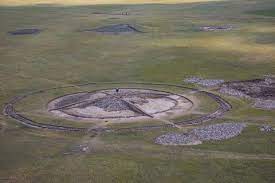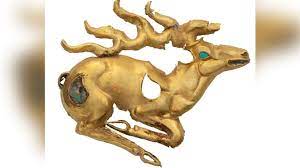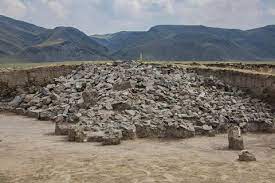An incredible haul of 2,800-year-old gold jewellery has been unearthed by archaeologists in Kazakhstan. Some 3,000 golden and precious items were found in a burial mound in the remote Tarbagatai mountains.
The ‘priceless’ treasure trove is believed to belong to royal or noble members of the Saka people who held sway in central Asia eight centuries before the birth of Christ.
Among the stash are earrings in the shape of bells, gold plates with rivets, plaques, chains, and a necklace with precious stones.
Gold beads decorating clothes were made using sophisticated techniques, indicating an exceptional level of jewellery-making skills for the period. Archaeologists expect to find the remains of the prestigious couple who owned the glittering treasures, but they haven’t opened their graves yet.
Professor Zainolla Samashev, in charge of the excavations, said: ‘A large number of valuable finds in this burial mound let us believe a man and a woman are buried here – the reigning persons or people who belonged to the elite of Saka society.’
A stash of 2,800-year-old gold jewellery has been unearthed by archaeologists in Kazakhstan
Head of the East-Kazakhstan region Danial Akhmetov said: ‘This find gives us a completely different view of the history of our people.’
The ancient people clearly had exceptional skills in mining, or extraction, selling and jewellery making, he said.


‘We are the heirs of the great people and great technologies,’ he said.
There are some 200 burial mounds on the Eleke Sazy plateau, where these treasures were found, but many were robbed in ancient times.
The plateau is surrounded by rich pastures and was seen as a ‘paradise’ by the Saka kings.
Despite some of the treasure being removed in the time of Russian emperor Peter the Great, experts believe they will find more golden remains.
‘There are a lot of burial mounds here and the prospects are very large,’ said leading Kazakh archaeologist Yerben Oralbai.
The Saka people were a branch of the Scythians – a sophisticated nomadic civilisation in central Asia stretching into Siberia.





